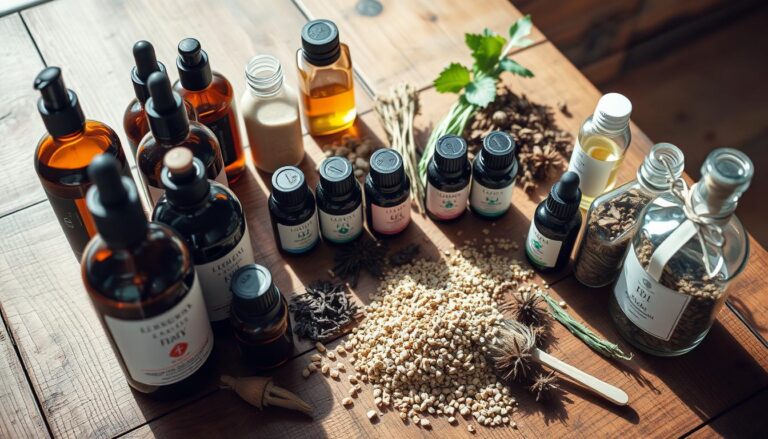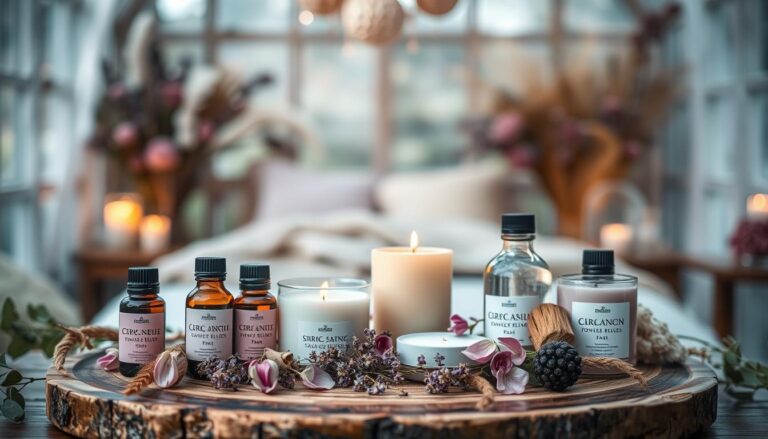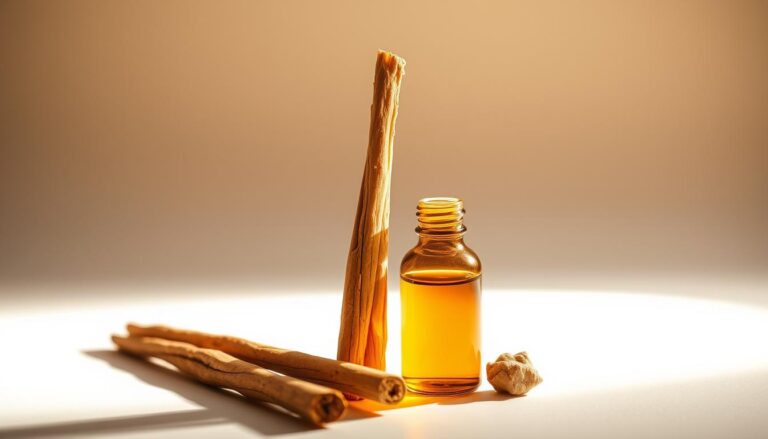Ever wondered how to safely enjoy the perks of essential oils? Well then we need to talk about carrier oils and how to choose the right one for every occasion.
Plant-based oils play a crucial role when blending essential oils. These gentle, nutrient-rich liquids act as a bridge between potent extracts and your skin, ensuring you reap their rewards without irritation.
Historically, cultures worldwide have relied on these natural bases for beauty and wellness.
Ancient Egyptians used them in rituals, while Ayurvedic traditions blended them with herbs.
Today, they remain vital for modern aromatherapy and skincare routines.
Why do they work so well? Their molecular structure allows them to absorb into your skin while carrying essential oil compounds.
Unlike their fragrant counterparts, they’re typically odorless and packed with vitamins or fatty acids that nourish your complexion.
With so many options available, from lightweight choices like jojoba to rich picks like avocado, it’s easier than ever to find your perfect match.
This guide will walk you through their unique traits, uses, and how to pair them with your favorite extracts.
Key Takeaways
- Plant-based oils safely dilute potent extracts for skin-friendly application
- They’ve been used globally for centuries in beauty and wellness practices
- Their molecular structure helps deliver benefits without irritation
- Different from essential oils in scent, extraction methods, and purpose
- Options range from lightweight to rich textures for various needs
- Proper selection enhances both safety and skincare results
Introduction to Carrier Oils
Natural plant extracts have shaped beauty routines for millennia.
These gentle liquids come from seeds, nuts, or kernels through careful processing. Unlike their aromatic cousins, they stay stable and nourish your skin without strong scents.
What Makes Them Special?
Cold-pressing keeps their nutrients intact. This method crushes plants without heat, preserving vitamins and fatty acids.
You’ll find these substances work like nature’s delivery system, thus helping active ingredients absorb better into your skin.
| Extraction Method | Benefits | Common Uses |
|---|---|---|
| Cold-Pressed | Preserves nutrients | Facial serums |
| Expeller-Pressed | Higher yield | Body lotions |
| Solvent Extraction | Cost-effective | Industrial products |
Ancient Roots, Modern Uses
Egyptian queens bathed in sesame blends 5,000 years ago. Ayurvedic healers mixed neem with herbs for skin remedies.
Today, Moroccan argan and tropical coconut extracts fill bathroom shelves worldwide.
Their lasting popularity proves nature’s solutions often outlive trends.
Why the comeback? People want skincare that’s simple and traceable. These plant-derived bases blend perfectly with modern essentials like aromatherapy diffusers or massage rollers.
They’re the quiet heroes behind many wellness rituals.

The Benefits of Carrier Oils for Skin, Hair, and Overall Wellness
Your skin and hair crave nutrients just like your body does.
These natural extracts deliver vital compounds through topical application, working with your biology rather than against it. Let’s explore how their unique chemistry supports your wellness goals.
By the way, here’s a related article on Essential Oils for Beginners, in case you want to go deeper on the subject.
Powerhouse Nutrients for Healthy Cells
Fatty acids act like building blocks for your skin’s protective layer. Oleic acid helps repair dry patches, while linoleic acid maintains moisture balance.
Vitamins A and E neutralize free radicals from pollution or sun exposure.
These components team up to:
- Strengthen your skin’s natural barrier
- Speed up healing of minor irritations
- Prevent moisture loss during cold weather
| Key Component | Skin Benefit | Hair Benefit |
|---|---|---|
| Omega-3 | Reduces redness | Adds shine |
| Vitamin E | Softens texture | Prevents split ends |
| Linoleic Acid | Minimizes pores | Strengthens roots |
Beyond Surface-Level Care
Massage with these plant extracts improves blood flow to tissues. This helps nutrients reach deeper skin layers while relaxing tense muscles.
For hair, regular scalp treatments can reduce flakiness and support thicker growth.
Lightweight options absorb quickly for daytime use, while richer formulas work overnight.
Always patch-test new products as your unique biology determines what works best!
Popular Carrier Oils: From Coconut Oil to Jojoba Oil
Navigating the world of plant-based extracts can feel overwhelming, until you meet the superstars.
Coconut and jojoba lead the pack, each offering distinct textures and benefits for your skincare routine.
Let’s explore what makes these natural bases stand out.
Key Characteristics of Common Extracts
These natural bases work differently based on their origins. Coconut extract solidifies below 76°F but melts smoothly onto skin, delivering antimicrobial lauric acid.
Jojoba, which technically is a liquid wax, mirrors your skin’s natural oils, making it ideal for balancing sebum.
| Natural Base | Key Component | Texture | Best For |
|---|---|---|---|
| Coconut | Lauric Acid | Rich | Body Moisture |
| Jojoba | Wax Esters | Light | Face & Hair |
| Sweet Almond | Oleic Acid | Silky | Massage Blends |
| Argan | Vitamin E | Medium | Anti-Aging |
Comparing Absorption and Scents
Texture affects how quickly these extracts sink into your skin. Lighter options like jojoba vanish within minutes, while coconut leaves a protective layer.
Aromas range from tropical coconut to argan’s subtle nuttiness.
| Extract | Absorption Speed | Aroma Profile |
|---|---|---|
| Coconut | Slow | Tropical |
| Jojoba | Fast | Mild |
| Sweet Almond | Medium | Nutty |
| Rosehip | Quick | Earthy |
Store coconut in cool places to maintain its texture. Jojoba stays stable for years, thanks to its wax content. Pair these traits with your skin’s needs for customized care.
Understanding Essential Oils and Their Dilution Needs
Using essential oils undiluted is like pouring hot sauce directly on your tongue, it’s way too intense!
These powerful plant extracts need proper mixing to work safely with your skin. Let’s break down how to balance their strength with smart dilution practices.
Safety First: Dilution Guidelines
Skin reactions happen when pure extracts overwhelm your pores. Adults should mix 15-60 drops of essential oil per 6 teaspoons of natural base, depending on use.
Children need gentler blends, just 3-6 drops for the same amount.
| Dilution % | Essential Oil Drops | Base Amount | Best For |
|---|---|---|---|
| 2.5% | 15 | 6 tsp | Daily face care |
| 5% | 30 | 6 tsp | Muscle massage |
| 10% | 60 | 6 tsp | Short-term treatments |
How Natural Bases Boost Results
Diluting doesn’t weaken benefits, it enhances them.
Plant bases help essential oils absorb deeper into your skin. Their fatty acids create a slow-release effect, making aromatherapy benefits last longer.
Always test blends on your inner elbow first. Wait 24 hours to check for redness.
This simple step prevents surprises and helps you enjoy scents like lavender or peppermint worry-free.
Choosing the Right Carrier Oil for Your Skin Type and Needs
Finding your perfect plant-based companion starts with understanding your skin’s unique language.
Texture preferences, sensitivity levels, and specific concerns all influence which option works best.
Let’s simplify the selection process by focusing on two key factors: biological needs and sensory preferences.
Identifying Your Skin Type
Start by observing how your face behaves. Dry types often feel tight after cleansing, while oily complexions develop shine quickly.
Combination skin shows both traits, and sensitive versions react easily to new products.
Jojoba mimics your skin’s natural moisture, making it ideal for acne-prone or balanced types. Grapeseed absorbs rapidly for oily or humid climates.
Those with delicate complexions should try calendula-infused options for gentle nourishment.
Considerations for Odor and Absorption
Some bases have subtle scents that blend with essential oils, while others stay neutral. Sweet almond offers a mild nutty aroma, whereas fractionated coconut stays odorless for custom blends.
| Plant Base | Absorption Speed | Skin Match |
|---|---|---|
| Jojoba | Fast | Acne-prone |
| Avocado | Slow | Dry/Mature |
| Grapeseed | Medium | Oily/Combination |
Always patch-test new products on your inner wrist first. Wait 24 hours to check for redness or discomfort. This simple step helps prevent irritation while you discover what makes your skin thrive.
Carrier Oils: Their Therapeutic Properties and Uses
Plant-derived bases do more than just dilute potent extracts, they also bring their own health-boosting superpowers to your wellness routine.
Let’s uncover how their unique chemical makeup addresses specific concerns while nourishing your body.
Nature’s First Aid Kit
Black cumin seed extract fights inflammation with thymoquinone, easing eczema flare-ups.
Evening primrose’s gamma-linolenic acid helps balance hormones during menstrual cycles.
For stressed minds, the antioxidant content found in rosehip promotes calm when massaged into temples.
| Plant Extract | Active Component | Health Application |
|---|---|---|
| Sea Buckthorn | Palmitoleic Acid | Burns & Wounds |
| Castor | Ricinoleic Acid | Joint Discomfort |
| Grapeseed | Proanthocyanidins | Antimicrobial Care |
Vitamins That Work Overtime
Vitamin E isn’t just a preservative, it shields skin from pollution damage.
B-complex vitamins in avocado extract revive dull complexions. These nutrients team up with fatty acids to create protective barriers against environmental stressors.
| Nutrient | Source | Key Effects |
|---|---|---|
| Vitamin A | Rosehip | Cell Renewal |
| Omega-6 | Evening Primrose | Moisture Retention |
| Oleic Acid | Olive | Softening |
Pair these bases with lavender for bedtime aromatherapy or peppermint for morning energy. Their fatty acid content helps essential oil benefits last longer on your skin.
Always check scientific studies to confirm which applications work best for your needs!
Tips for Safely Using Carrier Oils with Essential Oils
Want to get the most from your plant-based blends? Start with smart safety habits.
Simple precautions ensure your natural extracts stay fresh and effective while protecting your skin.
Test Before You Invest
Apply a dime-sized amount of your chosen base to your inner wrist or behind the ear.
Cover it with a bandage and wait 24 hours. Redness or itching means this option isn’t your skin’s friend.
Time to try another!
Keep It Cool and Dark
Store natural bases in amber or cobalt glass bottles away from sunlight.
A refrigerator shelf works best for heat-sensitive options like rosehip. Tight lids prevent air exposure that can turn fatty acids rancid.
Tree nut allergy? Skip sweet almond and argan extracts. Instead opt for sunflower or grapeseed.
Since cosmetic-grade bases aren’t FDA-regulated, buy from trusted suppliers with purity certifications.
Notice a funky smell or cloudy texture? Toss it.
Fresh plant extracts should smell earthy or neutral. Pair these tips with proper dilution for worry-free use in aromatherapy or massage routines that enhance your wellness life.
FAQ
What’s the best carrier oil for sensitive skin?
Jojoba oil closely mimics your skin’s natural sebum, making it gentle for reactive or delicate skin. For extra soothing, try fractionated coconut oil or sweet almond oil, which are lightweight and non-irritating.
Can I use coconut oil as a carrier oil?
Yes! Virgin coconut oil is rich in fatty acids that hydrate dry skin and hair. However, its thicker texture might clog pores for acne-prone types. Opt for fractionated versions if you prefer faster absorption.
How do I dilute essential oils safely?
Start with a 1-2% dilution: add 6-12 drops of essential oil per ounce of your chosen base. Always patch-test mixtures on your inner arm first to avoid adverse reactions like redness or itching.
Do carrier oils expire?
They do! Oils like rosehip or grapeseed last 6-12 months due to their high antioxidant content. Store them in dark glass bottles away from heat and sunlight to extend shelf life and preserve nutrients.
Which oil absorbs quickly without leaving residue?
Grapeseed and apricot kernel oils are lightweight and fast-absorbing. They’re ideal for facial serums or massages where you don’t want a greasy feel. Jojoba’s wax esters also mimic skin lipids for seamless absorption.
Can carrier oils help with acne?
Some can! Tea tree oil blends with jojoba or squalane may reduce breakouts due to their antibacterial properties. Avoid heavy options like cocoa butter, which could trap bacteria and worsen clogged pores.
Are there unscented carrier oils?
Yes—jojoba, fractionated coconut, and sunflower oils have minimal natural aroma. These let your essential oil blends shine without competing scents, perfect for subtle aromatherapy or sensitive noses.
What vitamins do carrier oils provide?
Many contain vitamins A (rosehip), E (avocado), and K (argan). These nutrients fight free radicals, boost collagen, and repair sun damage. Look for cold-pressed options to retain maximum vitamin potency.





